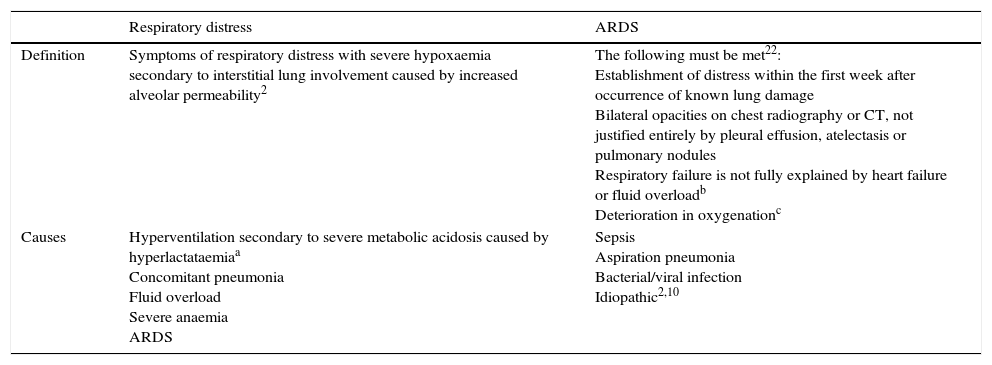Malaria is the most important parasitic disease worldwide, being a public health challenge in more than 90 countries. The incidence of pulmonary manifestations has increased in recent years. Acute respiratory distress syndrome is the most severe form within the pulmonary complications of malaria, with high mortality despite proper management. This syndrome manifests with sudden dyspnoea, cough and refractory hypoxaemia. Patients should be admitted to intensive care units and treated with parenteral antimalarial drug treatment and ventilatory and haemodynamic support without delay. Therefore, dyspnoea in patients with malaria should alert clinicians, as the development of respiratory distress is a poor prognostic factor.
La malaria es, globalmente, la enfermedad parasitaria más importante, representando un problema de salud pública en más de 90 países. En los últimos años se ha observado un aumento en la incidencia de las complicaciones pulmonares. Su forma clínica más grave es el síndrome de distrés respiratorio agudo, que tiene una elevada mortalidad a pesar de un adecuado abordaje terapéutico. Se presenta como un cuadro de disnea súbita, tos e hipoxemia refractaria, requiriendo ingreso en unidades de cuidados intensivos, tratamiento antipalúdico parenteral precoz, y soporte ventilatorio y hemodinámico. Todo paciente con malaria que presente disnea requiere vigilancia estrecha, ya que el desarrollo de distrés respiratorio es un factor de mal pronóstico.










